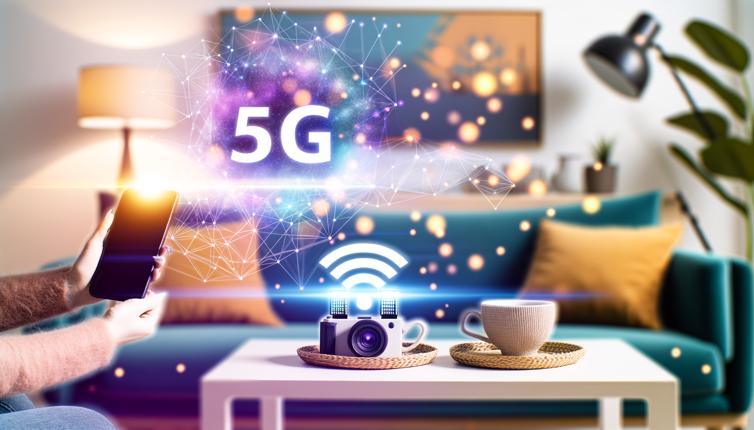What is 5G?
5G is the fifth generation of wireless technology, designed to provide faster speeds and lower latency compared to its predecessors. It operates on higher frequency bands, allowing for more data to be transmitted simultaneously.,One of the biggest advantages of 5G is its speed. With download speeds of up to 10 Gbps, it is significantly faster than 4G. This means you can download and stream content almost instantaneously, without any buffering or lag.,Another key feature of 5G is its low latency. Latency refers to the time it takes for data to travel from one device to another. With 5G, latency is reduced to just a few milliseconds, making it ideal for applications that require real-time responsiveness, such as online gaming and autonomous vehicles.
What is WiFi 6?
WiFi 6, also known as 802.11ax, is the latest version of the WiFi standard. It offers several improvements over its predecessor, WiFi 5 (802.11ac), including faster speeds, increased capacity, and better performance in congested areas.,One of the main advantages of WiFi 6 is its ability to handle multiple devices simultaneously. With WiFi 6, you can connect more devices to your network without experiencing a significant decrease in speed or performance. This is particularly important in households with multiple smart devices, such as smartphones, laptops, smart TVs, and smart home devices.,WiFi 6 also offers faster speeds compared to previous WiFi standards. It can deliver gigabit speeds, allowing for faster downloads, smoother streaming, and better overall performance.,In addition, WiFi 6 includes several technologies to improve performance in congested areas. It uses orthogonal frequency division multiple access (OFDMA) to divide each WiFi channel into smaller sub-channels, allowing for more efficient data transmission. It also employs target wake time (TWT) to enable devices to enter a sleep mode, reducing power consumption and improving battery life.
Key Differences
While both 5G and WiFi 6 offer faster speeds and improved performance, there are some key differences between the two technologies.,One major difference is their range. 5G operates on higher frequency bands, which have shorter range compared to lower frequency bands used by WiFi. This means that 5G coverage may be limited and may require more infrastructure to provide widespread access.,Another difference is their use cases. 5G is primarily designed for outdoor use and mobile devices. It is ideal for applications that require high mobility, such as smartphones, tablets, and autonomous vehicles. WiFi 6, on the other hand, is mainly used for indoor environments and is well-suited for home and office networks. It is also compatible with a wide range of devices, making it versatile.,Lastly, there is the issue of availability. While 5G is being rolled out in many countries, it is not yet available everywhere. In contrast, WiFi 6 routers and devices are already on the market and can be easily implemented in existing networks.,Ultimately, the choice between 5G and WiFi 6 depends on your specific needs and requirements. If you prioritize fast speeds and low latency on the go, 5G may be the right choice for you. However, if you have a lot of smart devices at home or in the office and need a reliable and fast connection, WiFi 6 might be the better option.
Conclusion
In conclusion, both 5G and WiFi 6 are significant advancements in connectivity technology. While 5G offers lightning-fast speeds and low latency, it is limited in range and availability. WiFi 6, on the other hand, provides reliable and fast connectivity for homes and offices, with support for multiple devices. Ultimately, the choice between 5G and WiFi 6 depends on your specific needs and the type of devices you use. If you require high mobility and fast speeds on the go, 5G may be the right choice. However, if you have a lot of smart devices and need a stable and efficient connection, WiFi 6 is the way to go.









